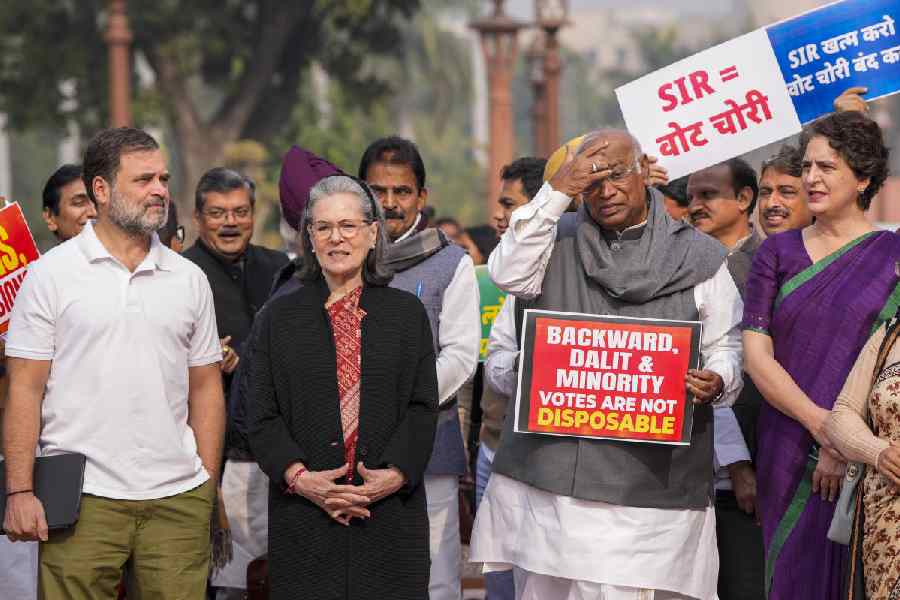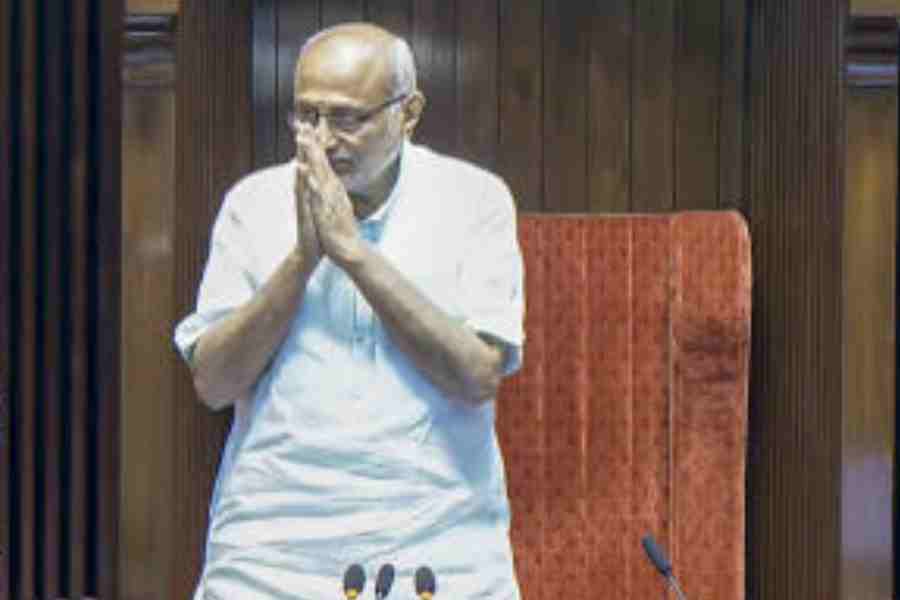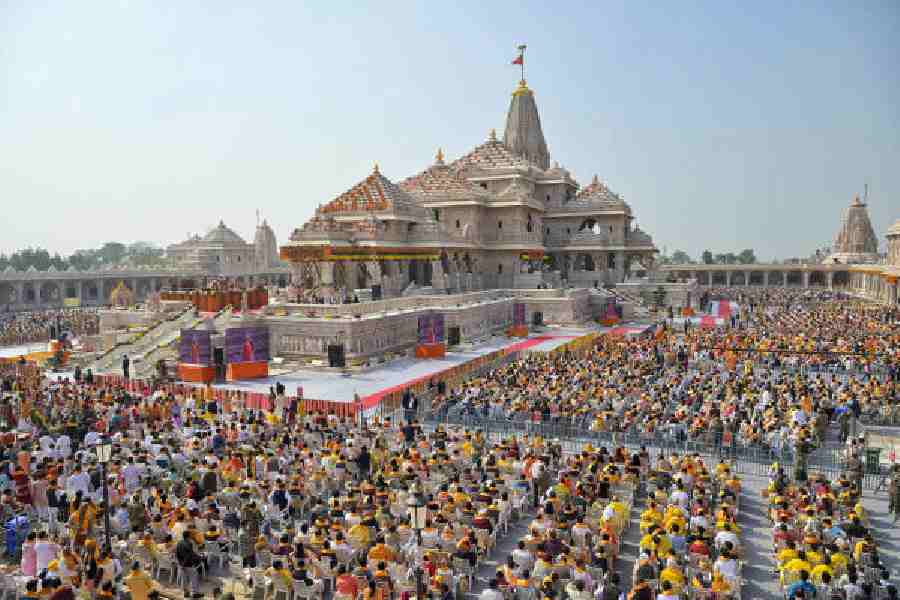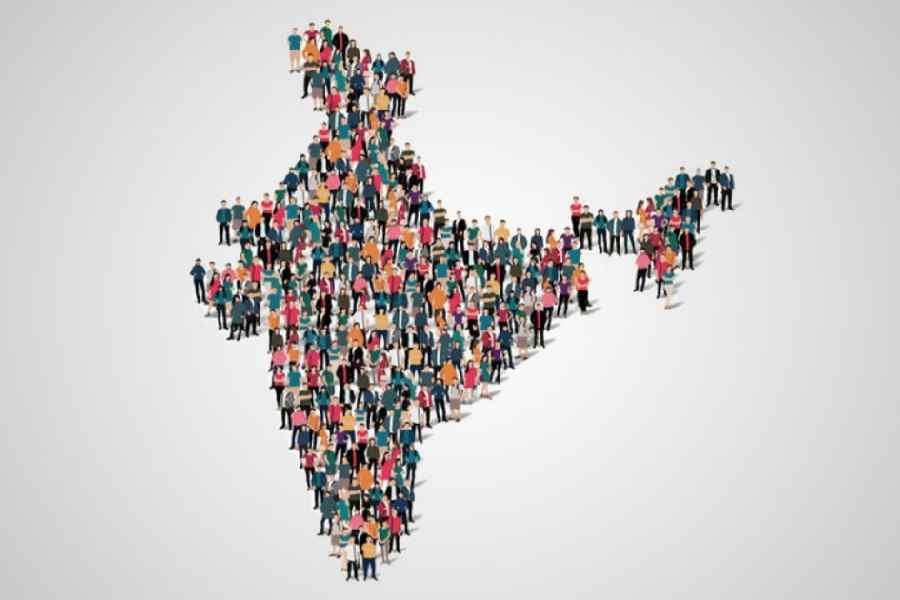|
|
“Go to the Four Seasons and look down from the top floor at the slums around you. Do you know what flags you will see? Not the Congress’s, not the BJP’s, not the Shiv Sena’s. Pakistan! Pakistani flags fly high!... You know what I think? We should carpet-bomb Pakistan. That’s the only way we can give a clear message.”
Simi Garewal later apologized for this little outburst on the television show, We, the People. She said she had mistaken Muslim flags for Pakistani ones. She had a harder time explaining away her ‘carpet bombing’ prescription. She claimed that she had meant to suggest a covert attack like the below-the-radar missions Americans so often undertake in Pakistan’s borderlands. Carpet-bombing is hard to do discreetly, but we shouldn’t make too much of this because the point isn’t Simi Garewal and her gaffe: it’s the way the English language news media covered the Mumbai tragedy.
The idiom of the coverage of the terror attack on Mumbai was in part shaped by the need to say something, anything, in the face of horror and evil. The need to voice not just their own feelings but the need to be a proxy for the People, to anticipate and echo a public revulsion, seemed to overwhelm reporters and studio anchors.
The wild-eyed animation with which they spoke seemed prompted by the belief that calm, even lucidity, was an inappropriate response to tragedy. Barkha Dutt’s agitation as she reported from sites attacked by the terrorists was so extreme that on occasion she seemed to hyper-ventilate on camera. Further away from the tragedy, in a studio, Arnab Goswami ratcheted up the hectoring self-righteousness that has come to define his manner, as he and Times TV seek to position the channel as India’s answer to Fox News.
Rajdeep Sardesai managed to be composed, compassionate and knowledgeable at Hemant Karkare’s funeral, but CNN IBN made up for that later by framing their reports on the terror strikes in gory graphics that could have been borrowed from the credits of a Ramsay Brothers horror movie. With the reporters, the excitement was understandable: it’s hard to be calm with bombs going off, bullets flying about and a landmark building burning in front of you. But there were aspects of the coverage that didn’t deserve the benefit of the doubt.
During the crisis, the foregrounding of the Taj was inevitable. It was the site of the longest battle and the hideous drama of its near-destruction was bound to be framed by any sensible cameraman. But it’s still worth making the point Shyam Benegal made, that the dozens of people killed in VT (or CST) station and their grieving relatives and friends got very little screen time. When VT figured in the coverage, it was there for CCTV grabs of the T-shirted terrorist.
The Taj, we were told over and over again, is an ‘iconic’ building. I think we can say without controversy that Victoria Terminus is much the greater landmark both architecturally and in terms of the number of people who pass through it. It may not be ‘home’ to them, in the way that the Taj clearly was for the many fluent habitués of South Mumbai who filed past the cameras of the English news channels, but more Mumbaikars have taken trains to and from VT than have sampled the hospitality of the Taj. And yet we didn’t have people on television reminiscing about the station and what it meant to them, that storied building that has been the beginning and the end of a billion journeys. Even the details of the killing, the alertness of the public address system operator who had platforms cleared and thus minimized the carnage, trickled out later, as the platform tragedy that had happened was eclipsed by the hotel tragedy that was still ‘breaking news’.
I can’t remember the last time that social class so clearly defined the coverage of a public event, or one in which people spoke so unselfconsciously from their class positions. The English news channels became mega-churches in which hotel-going Indians found catharsis and communion. Person after person claimed the Taj as home. Memories of courtship, marriage, celebration, friendship, the quick coffee, the saved-up-for snack, the sneaked lavatory visit, came together to frame the burning Taj in a halo of affection.
The novelist, Aravind Adiga, said in an interview with the BBC: “One of the differences between India and other countries is that a lot of our civic space is contained within the five-star hotels. They have a different function here for us, they are places where marriages happen, where people of all economic backgrounds go for a coffee. For the Taj Mahal to be attacked is somewhat like the town hall being attacked in some other place... .” I’d wager that 99 per cent of VT’s commuters haven’t seen the inside of the Sea Lounge. Whatever else they are, five-star establishments in India are not democratic civic spaces. Few Mumbaikars think the Taj Mahal Hotel is their city’s hôtel de ville.
The Trident, being less ‘iconic’, didn’t get quite the same attention as the Taj, but it wasn’t left out. Shekhar Gupta used his column on the edit-page of the Indian Express to write a thousand-word homage to the Trident. This included descriptions of his sleeping preferences, the number of nights he had logged at the Trident and the considerateness of the hotel staff.
This takes us back to that third hotel, the one we began with, back to Simi Garewal on the top floor of the Four Seasons, looking down at the slums below her, aflutter with sinister flags. Forget the fact that she mistook Islamic flags for Pakistani ones; anyone can make a mistake, and she’s apologized for hers. What’s interesting here is the lack of embarrassment with which she pictures herself and people-like-her staring down disapprovingly from a great, air-conditioned height at hovels and squalor.
Usually, privileged English-speaking Indians have the tact to be politically correct in their public statements; but in the middle of terror and tragedy, the sense of social self-preservation that keeps them from crassness, disappears. “Go to the Four Seasons and look down from the top floor at the slums around you.” That ‘you’ is us: Telegraph-reading, hotel-going people, who, in the heat of the moment and because of the death of people we know (or know of), become the world.
English and American papers treated the terror attack as an assault on the West. The terrorists had, after all, specifically looked for American and British citizens to murder. Ironically, even as NDTV, CNN-IBN and Times Now put hotel guests at the heart of the horror and bumped train commuters to its periphery, older English-speaking peoples counted their dead and dimly regretted all Indian casualties as collateral damage. In that residual category, if nowhere else, the Indian dead remained one People.











